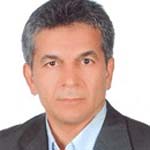Uncertainty and Spatial mapping of soil salinity and sodicity using machine learning methods in three different management depths in Abyek region
Author(s):
Article Type:
Research/Original Article (دارای رتبه معتبر)
Abstract:
Soil salinity and sodicity are affecting soils in arid and semi-arid regions, reducing soil fertility and leading to land degradation, posing threats to the sustainable development of resources. Creating maps of these soil variables throughout soil profile is crucial for effective land management. This study aims to investigate the spatial variability of soil salinity and sodicity in a part of the arid and semi-arid region of Abyek. Three critical depths for the cultivation of important agricultural products (0-50, 0-100, and 0-150 cm) were examined. The models were conducted using 281 soil data and environmental covariates. The modeling and prediction of soil electrical conductivity (salinity) and sodium absorption ratio (sodicity) were performed using four machine learning models: Cubist, random forest, artificial neural network, and XGBoost. The final maps were derived from a simple weighted ensemble model. The model uncertainty was assessed using bootstrapping with 50 repetitions. The results indicated high spatial variability of EC and SAR (exceeding 35%), with an increase from north to south of the region and from surface to deeper soil layers. Results showed that topography, climate, and vegetation are primary controlling factors of spatial distribution of soil salinity and alkalinity. R² for the final models predicting both EC and SAR across all three depths ranged from 0.61 to 0.81, demonstrating the models’ high efficiency, increasing with depth. The highest level of model uncertainty was observed in the southern parts of the region with high variability in EC and SAR values in short distances, fewer soil observations, and less topography, which was lower for models predicting sodium content at all depths compared to salinity. More than 65% of the area was non-saline, while non-alkaline areas covered 70% of it. Acquiring these maps represents a significant step towards improving land management practices based on the land’s potential.
Keywords:
Language:
Persian
Published:
Iranian Journal of Soil and Water Research, Volume:56 Issue: 3, Jun 2025
Pages:
607 to 629
https://www.magiran.com/p2864462
سامانه نویسندگان
مقالات دیگری از این نویسنده (گان)
-
Land suitability evaluation for Wild sheep (Ovis orientalis) habitat (a case study in Khabr National Park)
Masoud Salari, *, Ali Salajegheh
Journal of Range and Watershed Management, Summer 2025 -
Assessment of environmental indices for soil lead contamination in a part of Shahr-e-Ray, Tehran Province
Shahla Rahmani Siyalarz, Ali Keshavarzi *, , Mohsen Farahbakhsh
Iranian Journal of Soil and Water Research,


